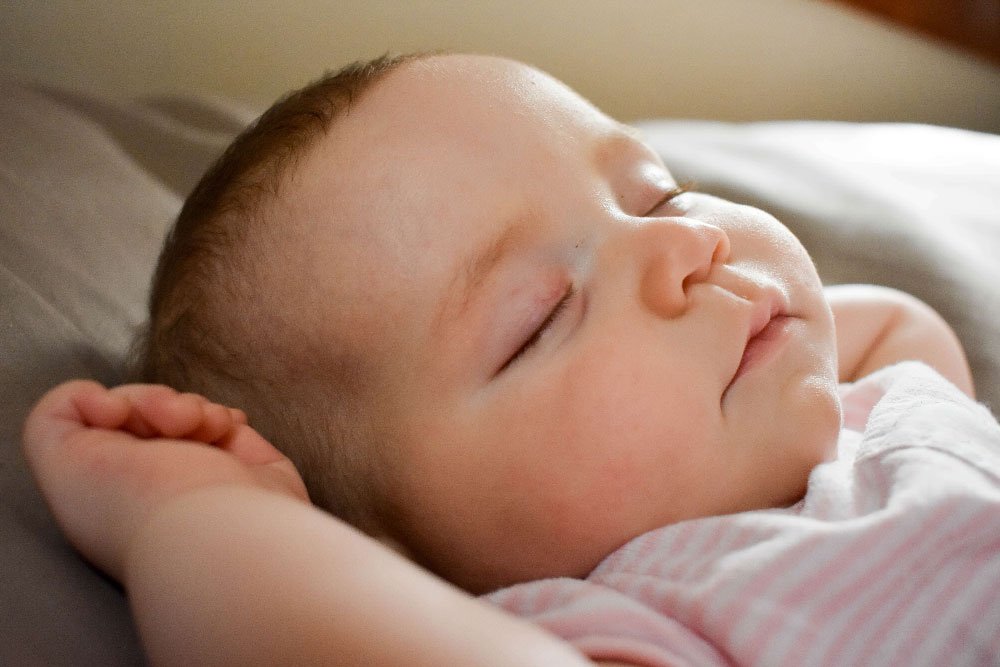Tips on Sleep Training Your Baby
Do you dread bedtime with your little one?
Is putting them down a struggle? Are you spending endless hours rocking and singing them to sleep? If you’ve answered yes, you need to explore sleep training for your baby.
What is sleep training?
Sleep training is teaching your baby how to self-soothe and put themselves to bed without being rocked, cuddled, nursed, or swaddled. It involves putting your baby down while they're fully awake and allowing them to fall asleep on their own. It also teaches them how to fall back asleep when they’ve woken up (totally normal in a baby’s sleep routine).
According to experts, babies should be sleep trained from the age of 4-6 months, as they are able to sleep 6-8 hours overnight without waking for a feed.
There are also multiple sleep training methods which you may have to try before finding a solution that works for you and your baby.
Let’s take a look at some of those methods:
1) Cry it out
This method involves letting your baby cry until they fall asleep (not a fan favourite for moms).
2) Ferber Method
They call this the ‘check and console’ method. This is when you put your baby down and let them cry for a certain period before you check on them and console them.
Over time, the intervals between checking up on them will get longer, and they will eventually learn to self-soothe and fall asleep without your help.
3) Chair method
This strategy is sitting on a chair while your kid is in their cot and gradually moving the chair closer to the door as time goes on. This may work well for older babies.
4)Bedtime fading
This method ultimately seeks to decrease your presence in your baby's room when putting them down for bed. Pay attention to your baby's sleep cues and watch for signs that they’re tired and ready for bed.
Try putting them down, but if they cry or seem inconsolable, pick them up and try again in 15 minutes. Keep doing this until you reach the desired bedtime.
Why is my baby waking up?
It’s totally normal for babies to wake up periodically throughout the night. Babies are restless sleepers, so parents don’t need to worry too much about nightmares or night terrors early on in their baby’s life.
Babies may wake for different reasons, like being cold, hungry, needing a diaper change, or simply having to be comforted until they go back asleep.
Sleep disturbances, such as nightmares or night terrors, may only be experienced by the age of two. The best thing to do, if older babies are experiencing these disturbances, is to comfort them and make sure they’re safe.
Some studies suggest that nightmares or night terrors may even be linked to a hereditary component. So chances are if you experienced nightmares/night terrors as a child, it’s more likely your child will too.
Sleep training tips
‘Sleep like a baby’. This is the term we wish to use while discussing our baby's sleep schedule. So here are a few tips that may help you in your sleep training journey.
Try to maintain a consistent bedtime routine at least 30-45 minutes before putting your baby down for bed
Wait until the time is right to start sleep training. Make sure your baby isn't going through any monumental life changes like new environments, adjusting to new child care, etc
Watch for sleep cues and try to put your baby down when they’re sleepy but not overly tired, as this makes it harder to settle down and may result in even more restless sleep.
Put your baby down while they're awake to train them to self-soothe and go asleep on their own. Also, resist rushing into your baby's room when you hear a noise or scream, since newborns frequently do this before falling back asleep.
If you need more professional assistance with your baby's sleep training and want to feel less anxious and overwhelmed, book your FREE 15-minute chat with Dawn Whittaker to find out more about her services.

